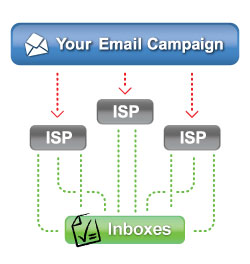A Marketing Manager’s New Job Description
August 24, 2010 Leave a Comment
 If you have used a marketing automation platform (or even a content management or email marketing solution) you will no doubt have noticed that these tools are starting to blur the lines between a marketer’s day to day activities and what was traditionally thought of as the IT department’s responsibilities. Like it or not, today’s marketers are being tasked with creating interactive content, executing complex campaigns, and analyzing the results — all without extensive support from more technical resources. Some tools are better than others at making landing page creation, email marketing, and other online activities ”user-friendly” but inevitably a little HTML and CSS knowledge go a long way.
If you have used a marketing automation platform (or even a content management or email marketing solution) you will no doubt have noticed that these tools are starting to blur the lines between a marketer’s day to day activities and what was traditionally thought of as the IT department’s responsibilities. Like it or not, today’s marketers are being tasked with creating interactive content, executing complex campaigns, and analyzing the results — all without extensive support from more technical resources. Some tools are better than others at making landing page creation, email marketing, and other online activities ”user-friendly” but inevitably a little HTML and CSS knowledge go a long way.
So how do you staff your marketing team? It can be difficult to find applicants with significant web development experience who want to go into marketing (as opposed to development). Rather than hire for these skills specifically, I recommend hiring for everything else and then just training people on the development skills. As I said, a little knowledge goes a long way. You don’t need CSS ninjas.
At my marketing automation company we now require all new hires in the marketing department to pass a basic HTML and CSS exam within 120 days of hire. The company pays for any training resources and classes but the new hires are expected to study outside of normal working hours. This approach is fairly similar to someone in finance being expected to pass a Series 7 exam.
Here are some of the resources I recommend making available:
- Excellent tutorials at W3Schools
- Very reasonably priced interactive lessons at lynda.com
- Night or weekend courses at a local university
Are you expected to know HTML and CSS in your marketing role? I know I am.







